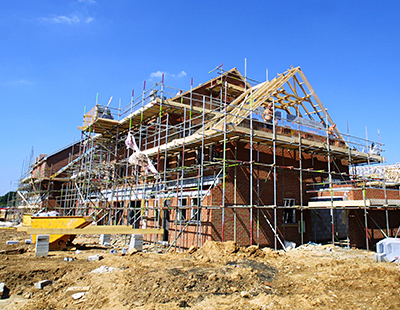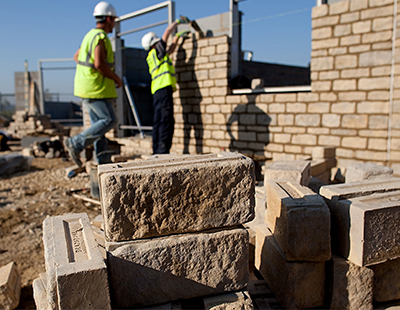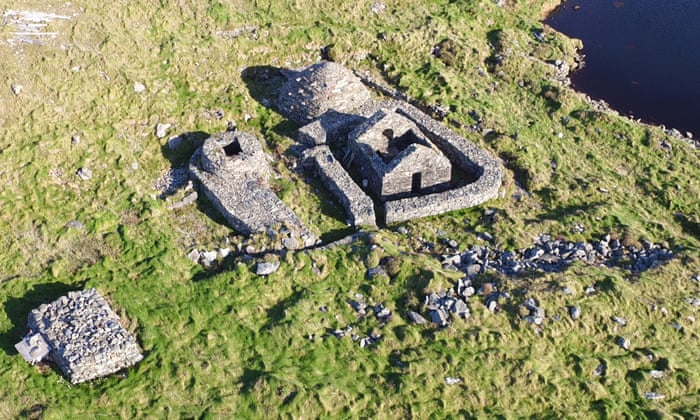House prices grow at slowest pace in more than five years as property market in the South East continues to lose steam
- UK average house prices rose by 2.5%, or £6,000, to £231,000 in December
- That was the slowest annual pace of growth since July 2013, ONS said
- London and North East see price falls, while Northern Ireland and Wales see strongest growth
- Within England, the West Midlands saw fastest growth at 5.2 per cent
UK house price inflation saw a further slowdown in December as markets in the South and East of England continue to lose steam, official figures show.
The price of an average UK home rose by 2.5 per cent, or £6,000, to £231,000 in the year to December - the slowest annual pace of growth since July 2013, according to the Office for National Statistics. The monthly rise was 0.2 per cent.
London house prices fell for the six consecutive month, declining by 0.6 per cent as they also did in November, as the capital feels the biggest impact from Brexit uncertainty and changes to stamp duty and buy-to-let.
The North East was the only other region where prices fell in December, by 1 per cent in the year to December, marking an abrupt decline after a rise of 1.7 per cent the previous month.
The West Midlands showed the highest annual house price growth within England, with prices increasing by 5.2 per cent. This was followed by the East Midlands and Yorkshire and The Humber, both increasing by 4.2 per cent.
However, growth was strongest in Northern Ireland and Wales, where prices rose by 5.5 per cent and 5.2 per cent respectively in the year.
In contrast, prices in the East of England rose by just 0.2 per cent to an average £289,602 while in the South East they rose by 1.2 per cent to £324,729.
December's decline was not surprising, given that the official figures lag a month behind other reports such as those by mortgage lenders, which use data from several months earlier in the house-buying process.
The latest Halifax house price index revealed the annual rate of growth slowed in January, rising by 1.3 per cent, with monthly prices dropped 2.9 per cent - the fastest pace of decline in over eight years.
Similarly, Halifax's rival Nationwide found in its own index at the end of last month that house prices inched up just 0.1 per cent in the year to January 2019.
Many analysts seem to agree that Brexit was to blame for a further slowdown in house prices as buyers prefer to stay put until they know what will happen, causing the market to stall.
It comes as a recent report by the Bank of England pointed out there was evidence that housing transactions were being postponed until after Brexit, with demand and supply both falling in the last quarter of 2018.
But the report also showed that demand for new build houses remained stronger outside London, in part due to housebuilders offering more incentive to finalise sales.
Lucy Pendleton, founder director of independent estate agents James Pendleton, said last year will go down 'as one of the hardest to read markets in recent memory' as prices in London began falling while other parts of the country kept notching up solid gains.
Estate agents and economists desperately tried to read the tea leaves last year, blaming every backward step on Brexit and every bounce on lack of supply.
'In truth, the veil that has been drawn by politics across the housing market’s true condition will only be lifted once we know what the UK’s future relationship with the EU looks like.
'Ultimately, 2019 could be the year that we come to realise just how much the bellows of Help To Buy and stamp duty relief for first-time buyers can really stoke the market.'
Mike Scott, property analyst at online estate agent Yopa, commenting on today's figures: ‘We do not expect that this will lead to widespread price falls, as long as the economic fundamentals remain strong, but we do expect a further slowdown as this official measure catches up with other reports, especially in the south and east of England.’
Jeremy Leaf, north London estate agent and a former RICS residential chairman, said they had seen investors and developers taking a more optimistic view than they have done for some time.
He added: ’The market continues to be underpinned by a shortage of available property and very low interest rates. However, in order to successfully transact, realistic sellers need to make their properties compelling in terms of price, presentation, or both, in order to engage with fewer but more pragmatic purchasers.
‘If the chances of a deal with our European partners improve, we expect to see more balance between supply and demand and a firming up of prices without necessarily seeing a significant boost in them.'




















